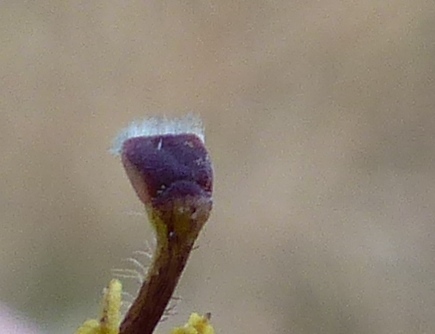Goodenia humilis
R.Br. Swamp GoodeniaPerennial to 20 cm high, often with adventitious roots; stems ascending, pubescent to glabrescent. Leaves mostly basal, linear to oblanceolate, 4–10 cm long, 4–8 mm wide, thick, usually glabrescent, acute or obtuse, entire or toothed, base attenuate into obscure petiole. Inflorescences terminal racemes or thyrses, not or hardly longer than leaves; pedicels articulate, 5–12 mm long; bracteoles linear, 3–4 mm long. Sepals linear-lanceolate, 1.5–3 mm long; corolla 8–12 mm long, pubescent outside, more or less glabrous inside, yellow, abaxial lobes 4–5 mm long, wings c. 1 mm wide; indusium square or broad-oblong; ovules numerous. Fruit ovoid, 3–3.5 mm long, valves entire; seeds orbicular, c. 0.5 mm diam., pitted, yellow-brown, wing vestigial. Flowers mainly Nov.–Mar.
LoM, MuM, Wim, GleP, VVP, VRiv, MuF, GipP, OtP, WaP, Gold, CVU, GGr, DunT, NIS, EGL, EGU, WPro, HSF, Strz, VAlp. Also SA, NSW, Tas. Widespread and often locally common in southern Victoria, usually growing in damp sites (e.g. margins of streams, swamps, dams, wet heaths etc.), less common north of the Great Dividing Range.
Jeanes, J.A. (1999). Goodeniaceae. In: Walsh, N.G.; Entwisle, T.J., Flora of Victoria Vol. 4, Cornaceae to Asteraceae, pp. 589–615. Inkata Press, Melbourne.
 Spinning
Spinning


